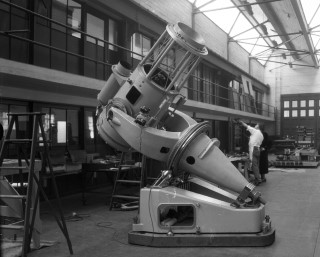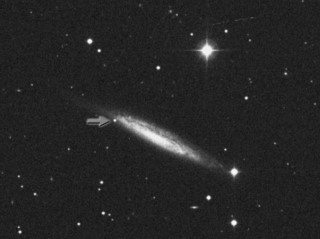Palomar Observatory’s 18-inch Schmidt Telescope: The 18-inch Schmidt telescope still in development at the California Institute of Technology. The telescope would first be used by Fritz Zwicky to perform his supernova survey.
Credit: CalTech/Palomar Observatory
I also like to think about previous surveys and what they accomplished. For instance, one of the most famous surveys in astronomy is the supernova survey from the 1930s done by Fritz Zwicky of Caltech. The phenomenon of supernovae was not a known category prior to Zwicky’s work; the Chinese called them "guest stars" because they just popped up and then went away. They are very rare and only last for days to months so they are easy to miss in the normal run of astronomical work particularly if you have detectors that are insensitive. Zwicky's survey observed the same parts of the sky over and over again, night after night.
Zwicky set out to learn more about these flashes and ended up defining a new class of object with an 18-inch Schmidt telescope that had a field of view about 3 times bigger than SDSS, but using photographic plates, which are about 1% as efficient as a CCD. He observed many plates of millions of objects, maybe billions, but the data were not in a form that were easily digested, and even if you could digest it all and measure everything, the measurements were not particularly useful. But a flash, something that got brighter by a factor of a million overnight, that is something you could find with his survey.
Zwicky did not measure most objects on his plates; he looked for the flashes. By the time of his death in 1974, he had discovered 120 supernovae of the 400 known by observations all over the sky at that time. By contrast, Sloan discovered thousands of supernovae in the eight years of the operation of the camera using repeated sky scans of .5% of the sky.
We now understand that all of the heavy elements come out of supernova. We never would have studied supernova and discovered this without Zwicky's survey. Every survey has its niche.



